How to Create an Ideal Hummingbird Habitat
Updated: Nov. 02, 2023
Hummingbirds need more than just sugar-water to be safe, happy and healthy. Follow these tips to design a perfect hummingbird habitat.
Our editors and experts handpick every product we feature. We may earn a commission from your purchases.
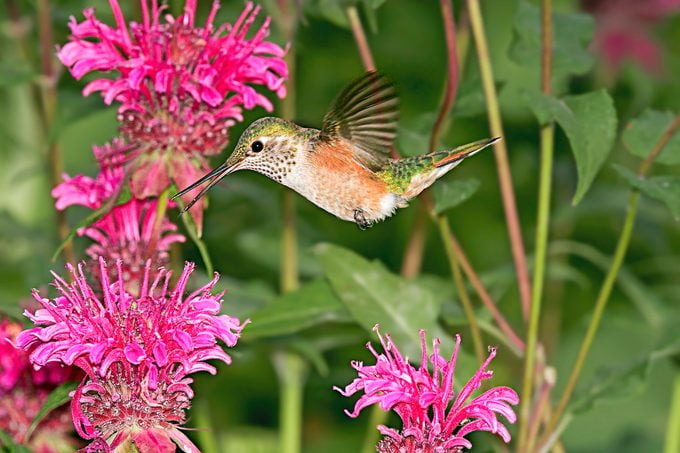
A major part of attracting hummingbirds—and keeping them around throughout their short time here—is creating the right hummingbird habitat. When you offer hummingbirds a yard where they can thrive, they will likely come back to delight you with their entertaining antics year after year. The good news is that they require very little—just food, water and protection—and it’s easy to set your yard up in a way that helps hummingbirds flourish.
Whether you’re aiming for a welcoming return or to attract new visitors, follow these tips to create a safe haven for hummingbirds.
Offer Secure Places to Land and Perch
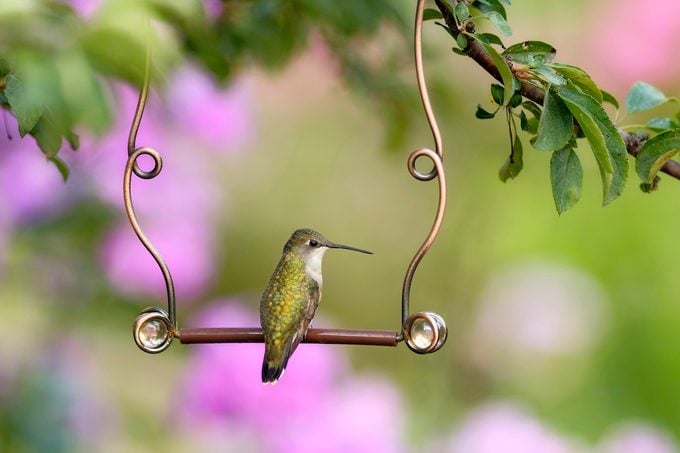
Hummingbirds hover, fly backward and dart straight ahead at speeds of 20 to 30 miles per hour—so it only makes sense that they would appreciate a spot to pause and reset. “Hummingbirds like to have a perch,” says Sandy Lockerman, a federally licensed bird bander in Harrisburg, Pennsylvania, who estimates that she’s banded some 4,000 hummingbirds in the past 12 years. “They’ll sit and make sure nobody else is coming, watch for bugs and rest,” she says.
A perfect perch could be a high, thin branch left to grow beyond the main growth of shrubs. Another option is purchased or homemade swings constructed from wire. Hang them on small trees or posts near nectar producing flowers and sugar-water feeders, but high enough off the ground to protect from predators such as cats.
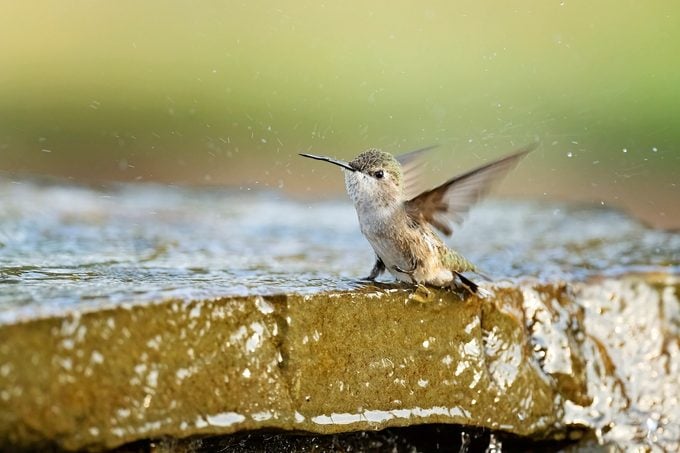
Also consider placing a perch near a bath to offer a preening station for wet hummingbirds. The ideal hummingbird bath is flat, shallow and outfitted with a mister or dripper. Or adapt a deeper traditional bird bath to better suit hummingbirds by filling it with rocks piled atop a small pump that creates a bubbling effect.
Prevent Hummingbirds From Getting Trapped
For an added layer of protection, keep perches, baths and feeders away from garages, screened-in porches, sheds or areas beneath decks. When hummingbirds enter an enclosed space, they naturally fly up. “They won’t come down and out,” Sandy says. “People will often find them on the floor suffering from exhaustion.” To free a hummingbird flying in an enclosed space, Sandy recommends lifting a broom toward it. “It will sit on the bristles to rest,” she says. “Then slowly lower the broom and take it outside. The bird will see a clear path, and off it goes.”
Serve a Variety of Nectar Options
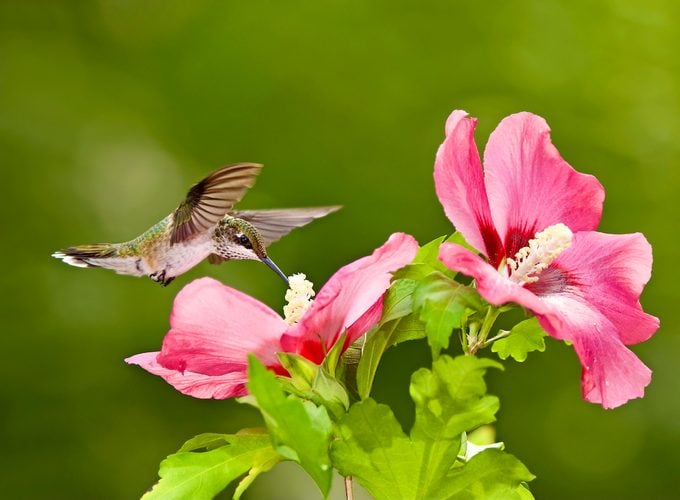
Provide both nectar-producing plants and sugar-water feeders. Should one become unavailable, the birds have another food option in their hummingbird habitat. “People fret about going away and their feeder going empty,” Sandy says. “I tell them that, to a hummingbird, your feeder is a flower. If the flower dies, the hummingbird will look for other flowers.” Sandy fills her urban landscape with salvias, penstemons, bee balm, petunias and jewelweed. “Planting all kinds of natives in the yard is the best thing,” she says. “As they’re drinking the nectar, they might even grab a bug or two.”
Check out the best perennials to grow for hummingbirds.
Skip Pesticides in Your Hummingbird Habitat
Sandy cautions against using pesticides. Not only do they reduce the number of bugs, which hummingbirds and other birds eat, but pesticides applied to the soil are also absorbed into plants’ nectar. When applied to a plant, pesticides can rub off on the bugs that the birds then eat. Plus it could rub off onto the birds. “They’ll clean their feathers and ingest it,” Sandy says.
Sugar-Water Feeder Safety Tips
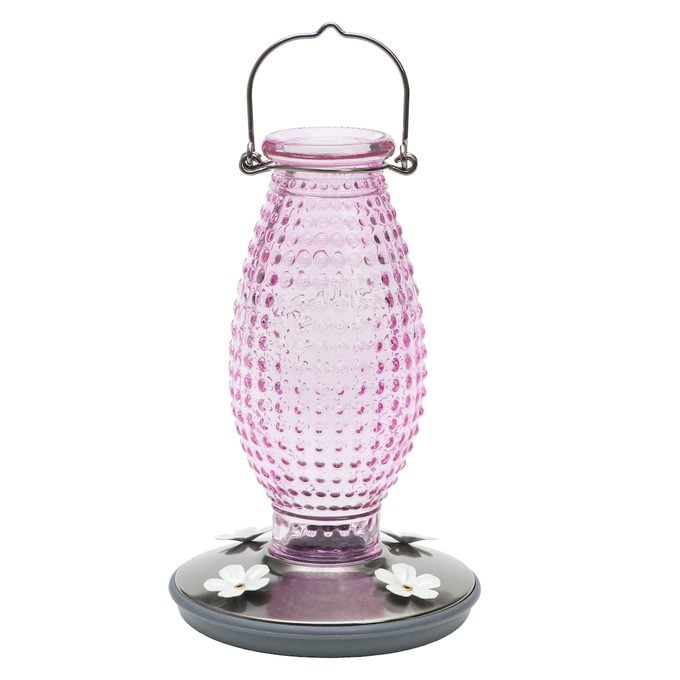
A well-placed sugar-water feeder protects hummingbirds from window strikes and predators such as snakes and cats, while affording you clear views. Sandy recommends 6 feet from a house, at least 5 feet off the ground and 15 feet from a shrub or tree. Keep some distance between sugar-water feeders and any seed and suet feeders.
Larger birds that are drawn to the site may intimidate hummingbirds. And if a feeder attracts more than one male hummingbird during breeding season, hang another feeder away from it. “Hummingbirds are territorial when their hormone levels are high. But they’ll cooperate if their hormone levels are low enough,” Sandy says.
Fill sugar-water feeders with 1 part refined white sugar to 4 parts water. Large batches will keep in the fridge for a couple of weeks.
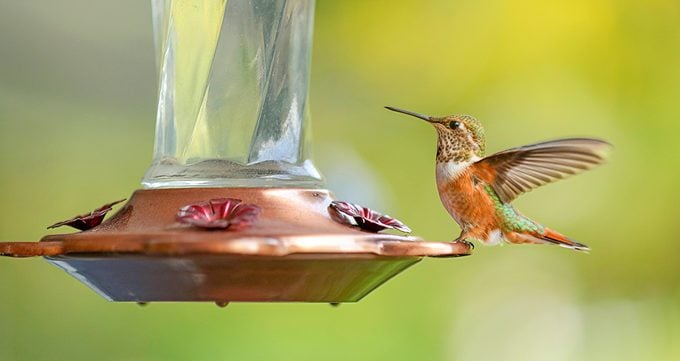
For her small landscape, Sandy uses a mixture of 2 tablespoons of sugar and 8 tablespoons of water at a time. “When it starts to go down, I do it again,” she says. Sandy warns against adding honey; organic, brown or golden sugar; commercial mixes; and red dye, all of which may be harmful to hummers. She adds that boiling is unnecessary—a good shake will do the trick.
Clean feeders with hot, soapy water every two to three days when the weather is hot, and rinse thoroughly. If mold forms, use a mild bleach solution and clean the feeding holes with a thin brush. “I never let my feeders get dirty enough midseason that I need to bleach them,” she says. “At the end of the year, I bleach them and let them dry.” Playing safety monitor will pay off with repeat visitors. “Hummingbirds are pretty special,” says Sandy. “Sit back and enjoy them.”
Ask the Experts: Hummingbird Habitat Questions
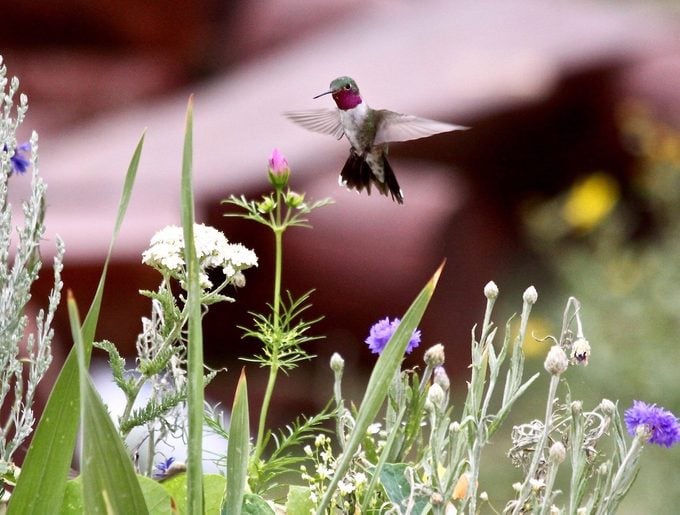
Question: Liza Peniston of Wichita, Kansas, asks, “Do hummingbirds like open or more secluded areas?”
Kenn and Kimberly Kaufman: Different kinds have different preferences. But in general, North American hummingbirds like open habitats. In the American tropics—home to more than 300 hummingbird species—some types always live in the deep shadows of dense forest, and they almost never come out in the sunlight.
If you want to create a hummingbird habitat anywhere north of the U.S.-Mexico border, design an area with some trees and shrubs, a good supply of flowers and plenty of open space. Avoid using pesticides—hummingbirds eat bugs as well as sugar-water and nectar.
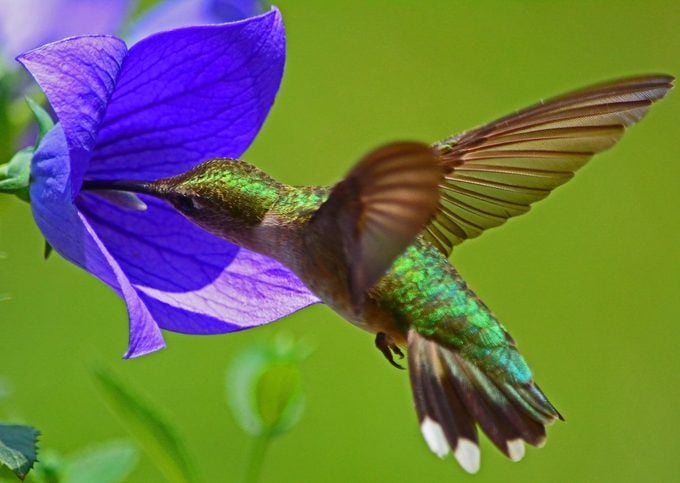
Question: “My mother-in-law has hummingbirds from spring to fall. I live only 15 minutes south of her and I only see hummingbirds in the fall, as they start to head toward Mexico. Can just a few miles make a difference as to where these birds decide to live?” asks Michelle Hesse of Lake Charles, Louisiana.
Kenn and Kimberly Kaufman: If you aren’t seeing as many hummingbirds as your friends and family, it could have something to do with the habitat in your neighborhood. In migration, hummingbirds may show up anywhere, but in nesting season they are more selective about their surroundings. They look for a special mix of trees, flowers and open areas. You can “sweeten the deal” in your yard by planting more nectar-producing flowers.
Check out frequently asked questions about feeding hummingbirds




















